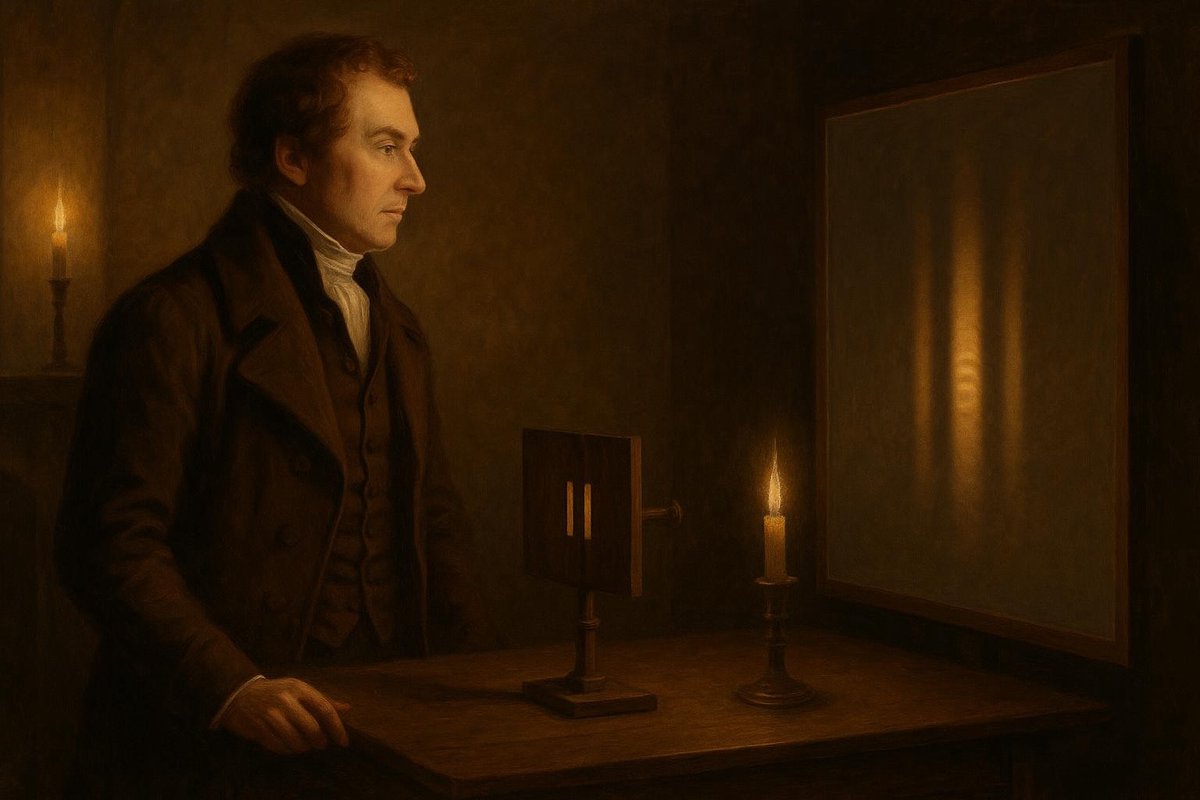
Hypothesis & Context
Have you ever wondered how something as common as light can harbor a secret so profound that it challenges our understanding of reality itself? The double-slit experiment, first conducted by Thomas Young in 1801, sought to answer whether light behaves as a wave or a particle. At the time, many believed light to be a particle, as Isaac Newton had suggested. Yet, this simple experiment aimed to challenge that notion, much like how humanity constantly questions its own perceptions.
- The hypothesis: Light consists of particles.
- Thomas Young, an English scientist, set out to study light’s behavior.
- Previous theories leaned towards Newton’s corpuscular theory of light.
Interestingly, Young’s quest was not just scientific; it was a cultural endeavor, reflecting the Enlightenment period’s thirst for knowledge and understanding. During a time when science was becoming a beacon of truth, the experiment offered a fresh lens through which to view the natural world, much like how we re-evaluate our beliefs today.
Setup & Method
Picture a darkened room, a thin beam of light passing through two narrow slits onto a distant screen. This setup was Young’s stage, where light’s true nature would reveal itself. The simplicity of the apparatus belied the profound complexity of the phenomenon it unveiled.
- Light is shone through two slits.
- The light impacts a screen to form a pattern.
- Expectations: If light is a particle, it should produce two bands.
Of course, the observer, a critical component, held the key to interpreting the results. This mirrored our own role in understanding reality, where perception influences interpretation. The duality of light became a metaphor for the duality in human comprehension, a dance between certainty and ambiguity.
Results & Reactions
The outcome was astonishing. Instead of two bands, an interference pattern emerged, suggesting that light behaves like a wave. This revelation challenged the prevailing notion of light as merely a collection of particles. The experiment was groundbreaking, its implications rippling through the scientific community and beyond.
- Observed result: An interference pattern, akin to wave behavior.
- The reaction: Initial disbelief, followed by curiosity and admiration.
- Debate ensued, questioning the nature of observation itself.
Albert Einstein later remarked on the dual nature of light, highlighting its paradoxical existence as both wave and particle. This sparked debates about the limits of human understanding, echoing today’s philosophical inquiries about consciousness and perception. As time goes on, we realize that reality, like light, is not bound by singular definitions.
Implications
The double-slit experiment does more than reveal the enigmatic nature of light; it echoes the complexity of human understanding. Just as light defies a single description, so too does our grasp of truth. This experiment reminds us of the importance of remaining open to multiple perspectives, a lesson that resonates in both science and philosophy.
- Implication: Light is neither purely particle nor wave.
- Reflection: Science as a mirror for human complexity.
- Thought experiment: How might our understanding be limited by perception?
In a world that often seeks binary answers, the double-slit experiment challenges us to embrace ambiguity and complexity. By acknowledging the multifaceted nature of light, and by extension, reality, we step closer to understanding not just the universe but also ourselves.
Fuel Someone Else’s Curiosity
Share this intriguing journey into the world of quantum mechanics and the nature of light with those around you. Engage in discussions that challenge conventional thinking and expand horizons. After all, curiosity is a spark that lights the path to deeper understanding. Let’s keep the flame alive and inspire others to question, explore, and reflect.

Leave a Reply